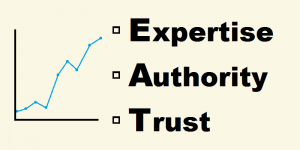Many entrepreneurs and small business owners decide at some point that they can’t “do it all themselves.” The first thing they often do is ask a colleague how they keep their business running smoothly without ever feeling stressed. More often than not, the answer is “I have a virtual assistant.”
If you haven’t worked with a virtual assistant before, you may be wondering how it all works. In fact, this is the question many entrepreneurs ask me. So, today, let’s answer some of your questions regarding how to work with a virtual assistant.
How do I communicate with my virtual assistant?
As you may know, VA’s work remotely. They will not be sitting in the next office where you can ask them to come to your office. They definitely won’t be filing any “physical” paperwork. Therefore all your communication will be online, via phone, text or chat program. You may never meet your VA in person even if you work with them many years. I’ve been a virtual assistant for 10 years and have only met a few of my clients. This long-distance relationship can sometimes be challenging depending on your needs and personality, but for many, it is the perfect solution.
How do I assign work?
There are many variables to consider when asking this question. You need to consider your VA’s:
- Knowledge of task: Is she familiar with your email marketing program?
- Familiarity with your standard practices: Does she know your preferences? For example: Do you publish every Friday at a specific time? Do you use images?
- Experience
A virtual assistant with many years in the field won’t need step-by-step instructions. A less experienced VA will need more direction.
It would be a good idea, at least early in the relationship, to assume nothing. You will quickly learn what level of direction your VA needs and it’s always better to give too much guidance than not enough.
Give very detailed instructions.

Until you know your VA’s ability, write very specific directions that don’t require him/her to read your mind. Make sure your explanations are step-by-step and leave nothing out. Most VA’s have multiple clients that may span several industries so don’t assume they know specific standards for your profession. If you can’t do this, you should consider hiring a well experienced virtual assistant.
Here are some effective ways to communicate exactly what you need:
Show them an example of the finished task. This may be a copy of your last newsletter, a typical blog post etc.
If the task is creating or completing a spreadsheet, show them an example or complete two or three rows.
Send them a screencast of the work to be completed. One of my clients did this when I first started work for her and I loved it! Everything was very clear so I knew exactly what to do.
How do I monitor progress?
You need to check in with your virtual assistant when the task is 20% complete. So, if you expect the task to take 6 hours, arrange a check-in with your virtual assistant after 90 minutes. The purpose is to check their work to make sure you’re on the same page. This allows you to update instructions that may have been misinterpreted, make necessary changes, or cancel the project.
How will I be billed?
(How do you break down your fees.)

This varies according to the virtual assistant. The most popular arrangements are retainer plans and project plans.
On a retainer plan, you “reserve” a set number of hours of work. For example, 10 hours for $ 400. The time frame for this work to be complete is most commonly a month. If you don’t use those hours within the month, you may lose them. However, a growing number of virtual assistants will allow unused hours to “roll” to the next month so you are not paying for time you didn’t use. You should ask your virtual assistant what her policy is before starting work.
As in other professions, the retainer amount is paid in advance. Many VAs accept credit card or Paypal payments and some may accept checks.
A project based job will have a definite beginning and end. Good examples are blog creation, membership portal set up or website creation. Depending on the size of the project, you will pay 50% down and 50% on completion. If the project will entail several months, progress payment(s) may be required. There should be no charges other than the project fee unless the scope of work changes. Be sure this is included in your contract.
Whether you choose a retainer or project agreement, a professional virtual assistant will ask you to sign a contract for services. Read this closely and ask for clarification if something isn’t clear.
What if it doesn’t work out?
Yes, it happens! A good virtual assistant is an amazing help to your business and can be the difference between stagnant profits and huge growth. Many entrepreneurs wonder how they survived without them. However, sometimes there are problems that need to be resolved in order for your VA to be the valuable asset you need. Here are a few common problems and what you can do about them.
Not Meeting Deadlines
What if your VA does great work but doesn’t meet deadlines? Stress to them the importance of getting the work done by the due date. If it’s a challenge to get the work completed on time, pad your deadlines. Ask them to have it done Tuesday when you don’t need it until Thursday.
Inconsistent or Poor Quality Work
If the work’s quality isn’t up to par, gently but firmly tell them they’re not doing it right. Show them exactly how you want the work done. A great way to do this is to make screenshot videos of you doing it yourself. Even better, share your computer screen through Skype or another VoIP program. Afterward, ask for their confirmation to make sure they understand. If possible, have them perform the tasks on the screen-share so that you can watch and give feedback immediately.
Communication Breakdown
If your virtual assistant isn’t communicating with you the way you want them to, try another channel of communication. For example, talk through chat instead of email. You might try asking them for a suggestion and being flexible with what they give you. It may help to schedule regular communication times.
Communication is also something that’s good to talk about in your initial contract phase. Tell your new VA that you’re most comfortable using, for example, Skype and ask if they can do that. Make it a condition of hiring them.
Business & Finance Articles on Business 2 Community(62)








